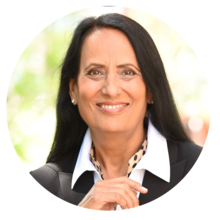About this Presentation
Typical situations where mediation may be of value include: marriage issues, looking after children when divorce happens, neighbor disputes, landlord-tenant disputes, small claims court legal actions, disputes between parents and teenage children, and many more examples. Basic assumptions of the situation are both sides believe they are in the right; both parties have no experience with mediation; both parties feel that any form of mediation is going to result in their losing and the other side winning; mediation frightens one or both parties; lawyers may already be involved; there is a great deal of pain, mistrust, and a refusal to listen to anything the other side might have to say. The key theory of constraints (TOC) thinking processes (TP) tools comprise the following: the cloud to capture the key aspects of the conflict situation; the prerequisite analysis to capture obstacles to any win-win resolution, and then to develop an agreed-upon plan to resolve the issues, the negative branch reservation (NBR) analysis to transform proposals into agreements; and a facilitator trained in using a prerequisite tree. This presentation develops a process by which conflicts can be voluntarily resolved. The actions required of the mediator and of the participants, and the logic of why the process works, are covered. This is a tested and successful TOC application.
What Will You Learn
To help you get the most value from this session, we’ve highlighted a few key points. These takeaways capture the main ideas and practical insights from the presentation, making it easier for you to review, reflect, and apply what you’ve learned.

The speaker emphasizes the importance of identifying and solving the core problem in mediation to prevent future conflicts.
The speaker discusses the use of Theory of Constraints (TOC) in mediation, which helps in identifying the core problem and working towards its resolution.
The speaker highlights the importance of effective communication in mediation, where each party should feel listened to and understood.
Instructor(s)
Alan H. Leader

Ms Alka Wadhwa
Alka Wadhwa is an experienced consultant and process improvement expert with over 24 years of expertise in the Theory of Constraints (TOC), Lean Six Sigma, and organizational performance optimization. She has successfully led projects in healthcare, financial services, and manufacturing, driving significant improvements such as a 67% boost in hospital operations and a 140% increase in outpatient visits.
Previously, Alka Wadhwa spent 17+ years at GE Global Research Center, where she led initiatives to enhance various GE businesses through advanced technologies, process redesign, and system optimization. Founder of Better Solutions Consulting, LLC, she specializes in using TOC, Six Sigma, and data analytics to streamline operations and build high-performance teams.
Her work has earned her multiple accolades, including the Empire State Award of Excellence in healthcare.

Dr Gary Wadhwa
Dr. Gary Wadhwa is a Board Certified Oral & Maxillofacial Surgeon with extensive experience in the field. He completed his Oral & Maxillofacial Surgery training at Montefiore Hospital, Albert Einstein College of Medicine in Bronx, NY, and has served as an Attending at prestigious institutions like St. Peters Hospitals, Ellis Hospital, and Beth Israel Hospital in NY. With a career spanning over two decades, he was the former CEO and President of a group specialty practice in NY from 1994 to 2015. Dr. Wadhwa holds an MBA from UT at Knoxville, TN, and has undergone additional training in System Dynamics at MIT, Health System Management at Harvard Business School, and Entrepreneurship and healthcare innovations at Columbia Business School. Committed to expanding access to Oral & Maxillofacial Surgery care, he is currently engaged in a meaningful project to provide healthcare services to underserved populations in inner city and rural areas through non-profit Community Health Centers.
